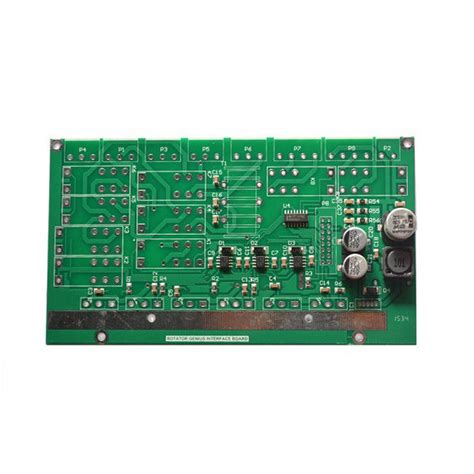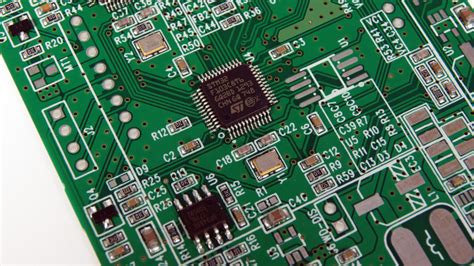How to Select Resistor and Capacitor Components for PCB Design
Two crucial components in PCB construction are resistors and capacitors.Their roles are crucial to developing the highest-quality industrial PCBs for safe,seamless electronic performance in all aspects.If we rely on faulty components,including resistors and capacitors,the likelihood of a complete pcb failure increases.
In this article,we’ll learn how to select the right components to maintain a PCB.Afterward, you’ll be able to successfully choose the right capacitor and resistors for your pcb project.

Choosing Resistor Components for PCBs:
First,let’s look how to choose the right resistor for your PCB.As you know,the purpose of a resistor is to block the flow of current through a circuits or device.Therefore,we can easily use them in PCBs to regulate current.Let’s look at the factors you need to consider when evaluating the right resistor
Tolerance:
Tolerance is an important factor for resistors.The best resistors are those with tolerances of 0.1%,5%and 10%.This is because we can easily handle these tolerance without any complications.Some experts even compare these three specific tolerances,emphasizing the use of a 0.1%tolerance in project.Some resistors with higher tolerances are cheaper than others.
- Power rating:
Undoubtedly,some resistors don’t perform well with power ratings.Therefore,for PCBs,we need robust resistors that can easily function under adverse condition.Resistors with inappropriate power rating can also directly damage the PCB.It is best to determine the resistor’s power rating before purchasing a resistor.
- Temperature:
Resistors also have different temperature ranges.If your pcb is used in heat-sensitive application and devices,you’ll need resistots that can easily withstand high temperatures.It’s best to compare resistors with your application to understand what temperature range you need,This will protect your pcb from heat damage and extend its lifespan.
- Resistance
Another important factor is resistance.The best resistors in this regard are 1 kilo-ohm resistors in this regard are 1 kilo-ohm resistors.These can make the pcb more efficient in terms of performance and durability.Always check the resistance before selecting a resistor.
- Choosing Capacitor Components for PCBs
Now,it’s time to look at what factors make a good capacitor.Carefully follow the sections below to see how you can avoid mistakes every time you choose a capacitor.
- Tolerance:
Every capacitor has a different tolerance.A good capacitor is one with a maximum tolerance of 20%.Well,if you find one with a 10% tolerance,that’s good enough.It’s best to check the tolerance of your capacitor to easily avoid various complications.
- Capacitance:
The default and suitable capacitance for a standard capacitor is 10uF,which is why we rely on this type of capacitor in all aspects.This type of capacitor is less likely to fail and perform poorly.
- Voltage Rating:
Due to voltage variations,capacitors are not good at withstanding high temperature.Therefore,you need to understand which type of capacitor is best for your project to avoid failures and risks,The best way to avoid confusion is to seek professional help.
- Temperature range:
Capacitors that can withstand temperatures up to 85 degrees Celsius have an optimal temperature range,which is why experts always emphasize their use.Make sure to use such capacitors to achieve positive results.
Factors to Consider When Selecting Resistor and Capacitor Components for your PCB design
You don’t want to ruin your project by relying on faulty resistors and capacitors. Therefore, to provide some guidance, we’ve compiled some effective tips in this section. Here are some handy considerations that can be very helpful in this regard.
Component Values: When it comes to capacitors and resistors, component values like current requirements, voltage variations, timing limitations, and impedance are crucial to determine, as these are variable factors. Therefore, be sure to adjust these values based on your project for optimal results.
Determining Tolerances: Power rating and tolerance are crucial for good performance in resistors and capacitors. Resistor tolerances are optimal if 1%, 5%, and 10% are used. Capacitor tolerances are optimal at only 5% and 10%. Determining power ratings is important because it helps with damage control and power dissipation.
Choosing the Right Size: It’s best to understand the importance of package size, as resistors and capacitors come in different sizes. First, review your PCB design to see which components will work best for your design. An inappropriate package size can easily damage a PCB due to short circuits. Experts believe that using surface-mounted device (SMD) components is beneficial in this situation.
Temperature and Environmental Requirements: Not all resistors and capacitors regulate temperature well and protect against environmental damage. You might be working on an application that requires additional features, such as moisture and vibration resistance. Therefore, be sure to select the type appropriate for your project.
Voltage and Current: Another important tip here is to determine the voltage and current ratings. It’s crucial that the resistors and capacitors you choose operate within certain current and voltage limits. Exceeding these thresholds can lead to complete failure of your PCB.
Signal Frequency: When selecting PCB components like resistors and capacitors, signal frequency and capacitor ESR are crucial. ESR is crucial for RF applications operating at high frequencies. It prevents signal loss and improves setup efficiency.
Researching Specialized Components: Some specialized projects require advanced components, such as high-voltage capacitors and some technology components with advanced filtering properties. Therefore, it’s best to carefully determine your needs and determine whether you truly need these specialized components.
Cost and Availability: Some capacitors and resistors with advanced features can be expensive. These products may not always be readily available on the market. Therefore, be sure to source suitable and affordable components to avoid incurring extra costs on your project.
Checking Supplier Datasheets: Another important tip in this regard is to check manufacturer datasheets. These are crucial, as they provide a clear understanding of the types of resistors and capacitors your project will require.
Prototyping and Testing: A handy tip is that when purchasing resistors and capacitors, be sure to test them on a prototype of an actual PCB to see if they function as you intended. This can ultimately prevent investment losses and rework.
Tips for Selecting Resistor and Capacitor Components for Your PCB Design

· Component Footprint Conclusion
Today, PCB manufacturers must pay attention to determining component footprints. This allows them to simultaneously determine the footprint layout. It’s beneficial to always rely on a printed circuit board that’s similar to the footprint design. You can use the datasheet for this purpose, significantly reducing the likelihood of errors and failures.
· Good Grounding Techniques
Ensure that the ground plane is accurately positioned in your design, as it is one of the most important PCB components. In the long run, we can combine ICs with capacitors to achieve more efficient device performance. For grounding purposes, it’s best to check the capacitor size and frequency.
· Ensure Complete BOM Data
It’s crucial to consider the BOM (bill of materials) so you can fully assess your expenses; this way, you’ll be able to prioritize your investments and rely only on the most critical PCB components. Therefore, considering BOM data is always helpful when producing PCBs on a commercial scale.
· Checking Spare Gates
Another good habit to follow is checking spare gates. These gates act as barriers, providing a seamless path for connecting inputs to their corresponding signals. This step completely prevents floating. Spare gates are crucial to your setup, as they ensure efficient performance.
· One Pad, One Connection
Adhere to a one-pad, one-connection approach. This ultimately ensures seamless PCB component arrangement and flawless assembly. The pads must be appropriately sized; otherwise, you’ll face complications later when soldering the PCB.
· Component Package Selection
Always determine the package size for your project. You can’t fit a large component on a small PCB, and vice versa. Therefore, determining the package size is crucial in this regard, allowing you to easily avoid complex PCB development.
We hope you can now choose the perfect capacitors and resistors for your future projects. After reviewing the important factors that will help you choose the right resistors and capacitors, you’ll be able to reduce the chances and risks of PCB failures starting today.







